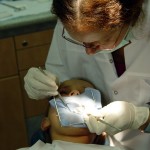
In order to optimise root canal disinfection during cleaning and shaping of the root canal to reduce microbial load and prevent persistent periapical disease a number of adjunctive therapies have been suggested. Adjunctive photodynamic therapy is one of these approaches which has shown promise in some studies.
The aim of this review was to assess the efficacy of adjunctive photodynamic therapy (aPDT) on reducing bacterial load in the primary endodontic treatment of teeth with chronic apical periodontitis.
Methods
A protocol for the review was registered on the RPOSPERO database. Searches were conducted in the Medline/PubMed, Embase, Scopus and Web of Science databases with no date or language restrictions. Two reviewers independently selected studies extracted data and assessed risk of bias. The Cochrane Risk of Bias 2 tool (RoB2) was used for randomised trials and the ROBINS-I tool for non-randomised studies. Mean Difference (MD) with 95% confidence intervals for bacterial load were calculated and random effects meta-analysis was undertaken. The overall certainty of evidence was assessed using the Grading of Recommendations, Assessment, Development and Evaluation (GRADE) approach.
Results
- 8 studies (4 RCTs, 4 non-randomised studies) met the inclusion criteria with 6 studies contributing to the meta-analyses.
- 2 RCTs were considered to be at low risk of bias and 2 at unclear risk. One of the non-randomised studies (NRS) was considered to be at serious risk of bias and 3 NRS at moderate risk.
- The 7 studies reporting tooth characteristics included anterior or single rooted teeth with average sample sizes ranging from 15 to 70 teeth.
- Most studies used a diode laser as the light source, with wavelengths between 660 and 980nm.
- 2 studies used toluidine blue as the photosensitiser (PS), two used polyethyleimine and chlorine, one methylene blue with 3 studies not specifying the PS used.
- The overall meta-analysis (6 studies) shows CFU values were significantly lower after aPDT application than after the use of chemo mechanical root canal disinfection (CD) alone, MD = -0.85 (95%CI: -1.54 to -0.15).
- Subgroup analyses showed aPDT to be more effective for anaerobic microorganisms but not for aerobic cultures (see table below)
| No. of studies | MD (95%CI) | |
| Aerobic | 4 | -0.73 (-1.75 to 0.29) |
| Anaerobic | 2 | -2.02 (-3.36 to -0.69) |
- Both disinfection methods (aPDT/CD and CD alone) resulted in significant CFU reduction, although the overall effect was higher after aPDT than after CD alone.
- The authors assessed the certainty of evidence as moderate.
Conclusions
The authors concluded: –
Despite the limitations of the evidence currently available, aPDT seems to play an important adjunctive role in endodontic treatments of primary infected teeth, as it reduces the microbial load in the root canal system when used after CD. Future CT should be designed according to specific standardised procedures, thus increasing strength and avoiding bias.
Comments
The authors registered their review on the PROSPERO database and searched 4 major databases with no date or language restrictions. Only 8 small studies were included and only 4 of these were RCTs. There was also variation in the type and power and wavelength of the lasers used as well as the photosensitiser used. The overall meta-analysis which included 6 studies does demonstrate significantly lower CFU values with aPDT than conventional disinfection. However, the limited number of small studies included, and their heterogeneity means the findings should be interpreted cautiously. It is also worth noting that there is a slight variation in the figures for the overall meta-analysis between the text and the figure. Future RCTs should be well conducted and reported following SPIRIT and CONSORT guidance, involve larger sample sizes and consider longer follow up periods.
Links
Primary Paper
Quintana RM, Scarparo RK, Münchow EA, Pinheiro LS, Tavares CO, Kopper PMP. Does aPDT reduce bacterial load in endodontic infected teeth? A systematic review and meta-analysis. Lasers Med Sci. 2023 Nov 20;38(1):268. doi: 10.1007/s10103-023-03938-4. PMID: 37981598.
Other references
Dental Elf – 30th Jun 2023
